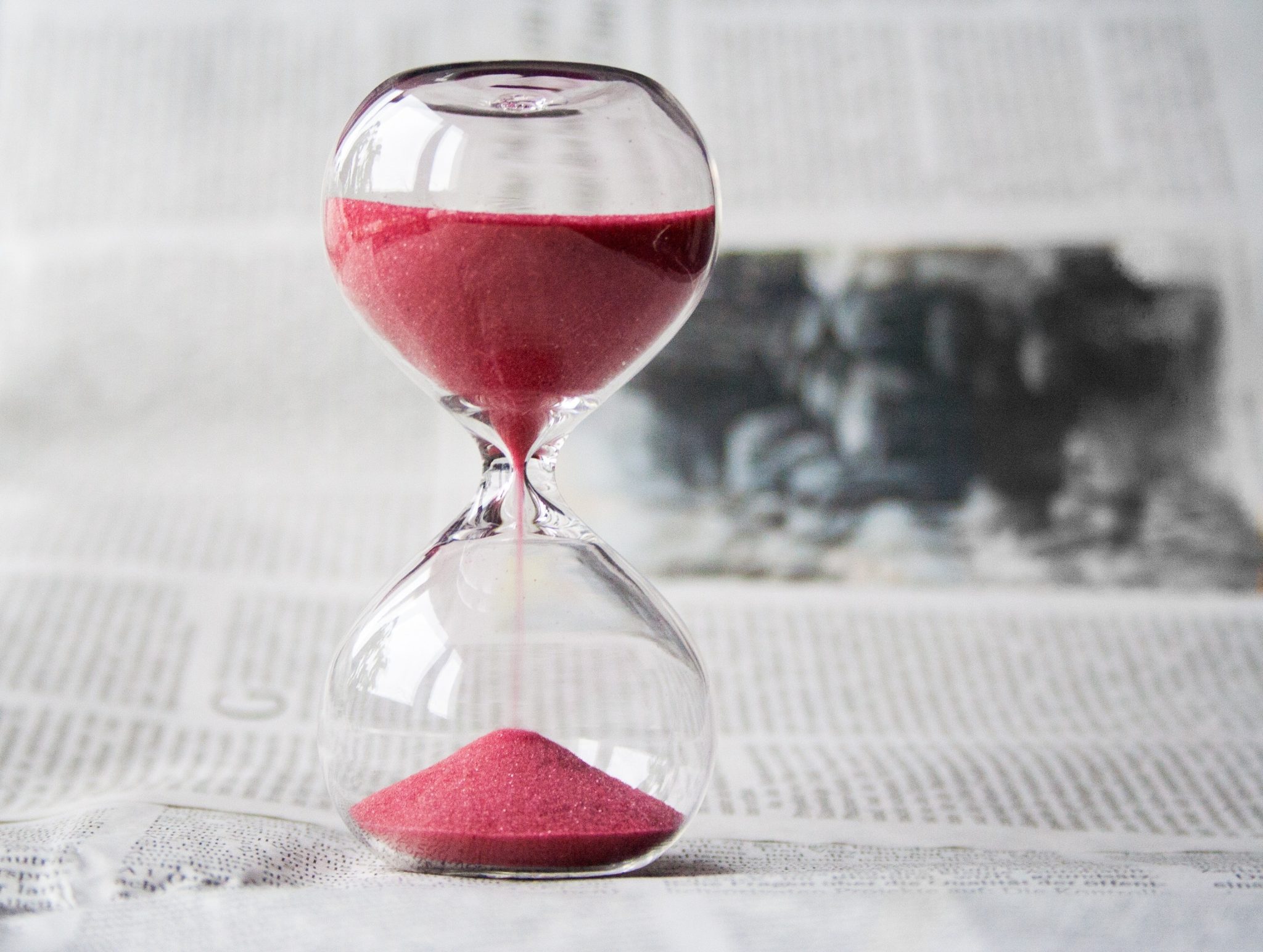In an ideal world, you would breeze through your to-do’s and still have time to do everything you enjoy. Unfortunately, many of us come home from working feeling discouraged because we wish that we could have gotten more done. Instead of beating yourself up for not getting enough done in 2020, start using these 15 productivity hacks to get everything you want, accomplished.
1. Become a time management ninja using your Calendar.
If you want to be more productive then you should only be focusing on activities that deserve your time. The best way to achieve this is by effectively managing your calendar.
As Renzo Costarella writes in a previous Calendar post, “On a basic level, most people use their calendar to schedule meetings, with each empty slot representing a time when you’re available. If you only had a couple of meetings scheduled in a day, this leaves considered free time.”
“A great strategy to use for calendar management is time blocking. As you schedule meetings on your calendar block out times throughout the day for finishing specific tasks,” adds Costarella. “That way you’ll accomplish what you need without over-extending yourself to meetings or unfocused tasks.”
2. Stick to a “work uniform.”
Yes, he gets in hot water over and over, now. But, as a business professional, did you ever wonder why Mark Zuckerberg used to wear the same outfit over-and-over again? The same orange t-shirt was because it saved him time and stress. Instead of spending 20-minutes looking for an outfit and worrying how he looked in it, Zuck already knew what he was going to wear and how’d he look.
As an added perk, wearing the same thing ensured that he was saving his energy for more important decisions. “I really want to clear my life to make it so that I have to make as few decisions as possible about anything except how to best serve this community,” Zuckerberg said. He also mentioned that he had “multiple grey shirts.”
When it comes to your work outfit, it can actually be whatever you prefer. Steve Jobs wore turtlenecks, while some professionals have a handful of suits on rotation. The idea is to have a minimalist and comfortable wardrobe that also reflects your industry. Grey t-shirts may be acceptable in Silicon Valley, but times are changing. And even an incredible t-shirt is not okay in the courtroom. I see the millennials looking quite snappy these days. Do cast a critical eye around every once in a while — so you don’t look like you are homeless.
3. The Pomodoro Technique
This is one of the most well-known hacks out there. And, for good reason, it’s been used by successful and productive people for decades because it helps:
- You focus on the task at hand.
- Eliminates multitasking.
- Develops a sense of urgency.
- Helps you stop being a perfectionist.
- Reduces stress because you’re doing one thing at a time.
- Gives your brain a chance to relax and recharge.
If you’re new to this concept, it’s simply where you break all of your tasks into 25-minute blocks of time. After those 25-minutes are up, you take a 5-minute break. After four of these 25-minute blocks you take a longer break — usually 15-30 minutes. Of course, people have modified this technique to better fit their own personal preference habits — but the idea is the same.
4. Keep one-day a week meeting free.
“One of my favorite hacks is No Meeting Wednesdays, which we borrowed from Facebook,” writes Dustin Moskowitz, CEO of Asana. “With very few exceptions, everyone’s calendar is completely clear at least one day out of the week. Whether you are a Maker or a Manager, this is an invaluable tool for ensuring you have some contiguous space to do project work. For me personally, it is often the one day each week I get to code.” This also eliminates the time wasted at unproductive meetings.
5. Group “like” jobs.
Also known as batching, this is a productivity hack where you group similar tasks together and complete them at the same time. This way you’re using the same frame of mind and not constantly shifting focus. For example, checking all of your emails, texts, and social messages first thing in the morning. Another example would be doing most of your cooking for the week on a Sunday since this involves not just preparing the meal, but also cleaning up afterward.
6. Follow the two-minute rule.
From David Allen’s bestselling book, Getting Things Done, this rule simply states that if something takes under two minutes to complete, then you should just do it. With the two minute rule, you can cross off all of these small tasks before they consume your thoughts and time.
7. Limit your phone usage.
What’s your biggest distraction? It’s most likely your phone, and that makes sense. Every time you phone buzzes, you stop what you’re doing and check out the notification — whether if it’s a text, email, or social media notification. That may not sound like a big deal, but considering that it takes 25-minutes to return to the original task, you can now see why you should limit your phone usage.
If you have the self-discipline, put your phone on silent on airplane mode. If you can’t then use the Moment app. If you’re Android 6.0 Marshmallow then make use the Do Not Disturb mode. Schedule in specific times to check your phone, like eight a.m., noon, and 4:30 p.m. and you’ll still remain in the loop without checking your phone every five minutes.
8. Listen to music.
Music has been found to maintain focus and help you stay productive, but, pick your music wisely. Listening to pop music may not be effective since you’re singing along. There’s a nifty app called Focus At Will that can help determine which type of music helps you concentrate best. As a result, you’ll boost your productivity.
9. Use a bullet journal.
Most productive use notebooks to jot down their thoughts and ideas. It’s a surefire way to help them remember these things. But, instead of a notebook, start bullet journaling. This strategy is basically an empty notebook that is your calendar, to-do list, sketchbook, and a diary in one location. What makes it so useful is that it can be organized any way you want.
10. Set macro goals and micro quotas.
There was a study on motivation that shows abstract thinking can be an effective method to help with discipline. In other words, you need to balance “dreaming big” with intrinsic motivators, aka the self-determination theory.
The best course of action here is to set “micro quotas” and “macro goals.” While your goals should relate to your big picture, the quotas are the minimum amount of work you must do daily to achieve those goals. For example, if you’re writing a book, then your quota could be writing two pages a day.
11. Chew more gum.
I love coffee. It’s delicious and gives me a much-needed boost — like I’m sure it does for you. However, like everything else in life, too much of it can be a bad thing. For example, coffee has been found to trigger anxiety — and you don’t want that when you’re already stressed. Instead of pouring another cup of Joe, chew some gum. Studies have found that chewing gum can helps with concentration and retaining information.
12. Use red and blue.
Your workspace has a major influence on your productivity. That’s why you should always keep it organized and clutter-free — along with getting some plants and exposing yourself to natural sunlight. However, you should also incorporate some red and blue around your workspace. According to a Science Daily study, red can help increase attention to details while blue can spark creativity.
13. Procrastinate productively.
You turn on Netflix to decompress or clear your head. Next thing you know you just watched an entire season of a show. That’s not good. Here’s the thing. We need to procrastinate occasionally. It’s a great way to recharge and refocus. But, you should be procrastinating productively. As opposed to watching Netflix, pick-up a book or take your dog for a log-walk.
14. Find your “golden hours.”
You’ve probably heard that you should eat a frog each morning. Not literally. It actually means that you should get your most important task done and over with first thing in the morning. We tend to be focused and energetic in the morning. Instead of eating that frog, schedule your most important tasks for the time that works best for you. If you’re unsure about your own “golden hours” then check out “The Perfect Workday to Maximize Motivation.”
15. Just be you.
Darrin Brege, the Creative Director and strategist at HelloWorld, encourages his team to design, build, and race paper boats. Adrienne Weissman, the chief customer officer of G2 Crowd, choreographs a dance routine to her favorite song in her head.
While these hacks are able to make you more productive in 2020, the truth is they may not work for you. If there’s something you do that keeps you pushing forward, then go ahead and keep doing it.
15 Productivity Hacks To Get More Done Each Day was originally published on Calendar by John Hall







